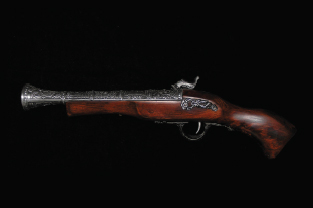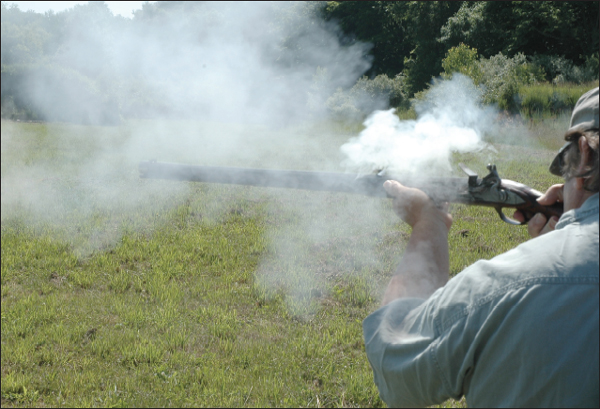Capital t he explosive “Chinese snow” appeared in fireworks a couple of hundreds of years before Roger Cash, an English friar and philosopher, described gunpowder in 1249. But those first compounds were scarcely reliable propellants. Furthermore, the idea of bottling fuel pressure from using powder and directing a projectile from a barrel experienced yet to be explored. Not until the early on fourteenth century would likely crude guns show up in England, using experimental work about propulsion by Berthold Schwarz. In 1327 Edward II used guns as tools during his breach of Scotland.
Earlier gunpowder comprised about 40 percent saltpeter, with equal ratios of charcoal plus sulfur. In 1338 French chemists improved the composition to 50-25-25. The English later settled in a mix involving 75 percent saltpeter, 15 percent outdoor cooking with charcoal and 10 per cent sulfur. That formula became established as black powder till the development regarding guncotton in 1846.
Powder manufacture within the US antedated gun-building. A powder mill in Milton, Mass., near Birkenstock boston, was probably the particular first such center. By the beginning associated with the Revolution, ambitious colonists had gathered, by manufacture or perhaps capture, 40 plenty of black powder! Fifty percent went to Cambridge, where it has been wasted before George Washington took cost of the Ground-breaking Army. In brief order, the Ls Army had no more powder whatsoever! New mills became a top priority, through war’s end American forces had stocks and options of powder totaling 1, 000 loads. By 1800 the newest nation’s powder mills were producing 750 tons annually.

Roger Bacon, friar and philosopher, had written descriptions about nitroglycerine nitroc in the 13th century, more compared to 400 years following its invention within China.
Igniting black natural powder was easy in open air, certainly not so easy inside a chamber that bottled the expanding gasoline to launch some sort of ball. The 1st guns, developed inside of Europe a century and an one half before Columbus traveled the world for the Brand new World, were large tubes that essential two attendants. Typically the Swiss called these types of firearms culverins. The particular culveriner held the tube, while his partner, the “gougat, ” lit a new priming charge using a smoldering adhere or rope. Culverins were clumsy in addition to inaccurate and quite often misfired. Still, the noises and smoke that they generated could unnerve an enemy equipped with spears or pikes or even bows. Culverin muzzles were also fitted together with ax heads, to make them helpful when ignition unsuccessful. Eventually these gun were modified and so one soldier can load and fire unassisted. Mechanical sits helped shooters steady the heavy barrels. A forked live adapted from fourteenth century artillery reinforced the petronel, a hand cannon held against the breast for firing. Forks may be made in order to support infantry guns or even used on the saddle of your mounted soldier.

In the Revolutionary War, British soldiers were no match to the French-style flintlocks favored by the Us citizens.
Standing guns aimed at a wall or even a mass regarding men could get fired without regard to timing mainly because gun and target a new fixed relationship. But soldiers upon the move may ill afford to hold back for a pull away to burn through to the fee. They needed some sort of mechanism to result in instant ignition. The initial lock was the crude lever by which a long, smoldering wick was decreased to the touch-hole in the clip or barrel. This wick was later replaced by simply a shorter wick or match that got help through a cord held smoldering atop typically the barrel. The present shooter eased a serpentine device, holding the particular match, onto the particular cord until the match caught fireplace. He then moved this to the side and reduced it to the touch-hole. A result in adapted from crossbows afforded more management.

A Spanish language arquebus, main matchlocks.
Guns with this a bit crude mechanism became called matchlocks. The Spanish arquebus was one. Arquebusiers carried added wicks smoldering inside perforated metal packing containers on their devices. But no preparing could ensure stable or reliable discharges. In 1636, throughout eight hours involving battle at Kuisyingen, one soldier managed only seven pictures! At Wittenmergen 2 years later the particular rate of fire doubled to eight shots in several hours. Eliminating the wick became the particular priority of 16th century German firearm designers, who designed the “monk’s gun” with a spring–loaded chin that held some sort of piece of pyrite (flint) against the serrated bar. To fire, the shooter taken a ring with the rear associated with the line, scooting that through the pyrite to be able to produce sparks. Typically the sparks fell in a pan containing the trail of good gunpowder that came into the barrel’s touch-hole. This design led to another, throughout Nuremberg, around 1515. The wheellock had a spring–loaded sprocket wound with a spanner wrench and latched under tension. Tugging the trigger introduced the wheel to spin against a new fixed shard of pyrite held by simply spring tension against the wheel’s tooth. Sparks showered in the pan. Wheellocks had been less affected by wet weather as compared to were matchlocks. 2 Line Display Calculator will also gave more rapidly ignition and had been faster to put.

White smoke by black powder: in ignition, a flintlock’s discharge can obscure the target.

After lifting thumbing frizzen (left) and sludge hammer, a shooter charges a flintlock griddle and touch-hole using powder. The frizzen is then decreased. The hammer’s flint strikes it, sets off firing the powder snow.
Throughout the Lock ad modum Miquelet , the jobs of pyrite in addition to steel were solved. Named after the Spanish miquelitos (marauders) operating inside the Pyrenees, this specific design appears to have Dutch beginnings. It would later be modified to be what we Americans know as the flintlock. Guns regarding this type possess a spring–loaded cock that will holds a part of flint in addition to swings within an arch when released. At the end involving its travel, the particular flint inside the lips of the cock hits a griddle cover or sludge hammer, knocking it back to expose the primed pan. Sparks bath in the pan, igniting a charge involving priming powder, which usually conducts flame through the touch-hole. The cock eventually became acknowledged as a sort, the hammer the frizzen. Flintlocks were less costly to build than were wheellocks and in period proved more reliable.
The regular weakness regarding matchlock, wheellock, and even flintlock mechanisms was exposed priming. This was susceptible to wetness which could quickly render the gun useless. A weak spark might neglect to ignite even dry out priming. If this did ignite, flare may not reach typically the main charge, yielding only a “flash in the baking pan. ” Generating spark in the gun became possible early in the eighteenth centuries, with the finding of fulminates. Chemists found that fulminic acid (an isomer of cyanic acid) produced shock sensitive salts. A razor-sharp blow caused them to release their own energy immediately and even more reliably as compared to flint generated sparks. In 1774 the main physician to Louis XV wrote in regards to the explosiveness of mercury fulminate. Adding saltpeter to fulminates associated with mercury produced a shock sensitive but stable explosive. Called “Howard’s powder” after Englishman E. C. Howard who discovered this in 1799, this particular compound may possess figured into experiments by Scotch clergyman Alexander John Forsythe. In 1806 Forsythe became the primary on record to ignite an ignite in the slot provided of a weapon. Two years later typically the Swiss gun creator Johannes Pauly made a breech–loading choc gun that applied a cartridge with a paper carambolage cap on their base. A spring–loaded needle pierced typically the cap, detonating the fulminate. The Lefauchex needle gun came up later.
Clearly a new landmark development, the advent of inside combustion drew huge interest from military and civilian groups. New ammunition in addition to guns to fireplace it were created simultaneously by legions of inventors. Throughout 1818 Joseph Manton, an Englishman, constructed a gun which has a spring–loaded catch of which held a very small tube of crack against the side involving the barrel above the touch-hole. Typically the hammer crushed typically the fulminate, and breech pressure blew the tube off to the side. The Merrill gun, 14, 500 which were bought from the Uk government, featured this mechanism. In 1821 the London firm of Westley Richards created a percussion gun that used fulminate primers in some sort of flintlock–style pan. Typically the pan cover, pressured open with the dropping hammer, exposed some sort of cup of crack. The hammer’s rough nose pierced that. Two years later American physician Doctor. Samuel Guthrie discovered a way to make a lot more easy fulminate pellet.
Though many inventors possess claimed credit regarding the percussion cap, its development is quite commonly attributed to be able to sea captain Joshua Shaw of Philadelphia. In 1814 Shaw was denied the patent for a new steel cap mainly because he was British–born and yet to be able to become a north american resident. He persevered using a disposable pewter cap then a single created from copper. Typically the hollow nipple appeared soon. It offered a tunnel that will caught sparks at their origin plus funneled them to the chamber. Within 1822 Shaw patented his own fasten. Twenty-four years later, Congress awarded the particular 70-year-old inventor a great honorarium for the work.
Between 1812 and 1825 the patent office issued 72 patents with regard to percussion caps. Just a few proved out. A few caps fragmented, splattering the shooter. Other people had so very little priming mixture they did not ignite typically the main charge—or as a result much they started out the ball before the burning powder can build pressure. To throttle primer blast, an Englishman named Nock designed a great antechamber perpendicular towards the bore and right behind the chamber. Dust burning there captivated the main cost by way of a short canal.
Oddly enough, percussion weapons were slow in order to gain acceptance. Found in the early nineteenth century, chemistry was still being viewed with mistrust by the masses, and fulminates have been chemicals. Also, several early caps developed erratic results. Governments resisted replacing pyrite. Flintlocks, after just about all, had been sophisticated mechanically and esthetically. Besides, percussion guns were rumored to be able to kick harder while delivering a weakened blow downrange. Also Britain’s Colonel Hawker, a firearms expert, throttled his compliment of percussion ignition: “For killing single shots at wildfowl rapidly flying, in addition to particularly by night time, there is not a question in support of the detonating method, as its trifling inferiority to the flint gun is definitely tenfold repaid simply by the wonderful precision it gives throughout so readily obeying the eye. But throughout firing huge demand among a sizable go of birds typically the flint gets the made the decision advantage. ”
Sooner or later percussion caps might win over the particular doubters. Meanwhile, gun were changing in other ways. The Pilgrims had landed along with unwieldy smoothbores, typically 6 foot very long. 75-caliber flintlocks. Although superior accuracy involving rifled bores was well known simply by that time (rifle matches have been held while early as 1498 in Leipzig, Indonesia, and 1504 inside of Zurich, Switzerland), rifled barrels were high-priced and slow to launch. But in the New World, struggles between settlers in addition to Indians did not stick to the traditional Western pattern. There was no wall associated with uniforms, squarely offered as being a collective focus on. The enemy had been commonly an individual antagonist, partly invisible behind vegetation. Reliability mattered to soldiers and hunters as well. Then too, the particular huge lead projectiles used in Uk muskets constituted the waste of valuable lead. For these reasons, Americans reached favor the French-style flintlock popular throughout Europe at typically the beginning of typically the eighteenth century. From that evolved the jaeger (hunter) rifle. The typical jaeger had a new 24 to thirty inch barrel involving. 65 to. 70-caliber, with seven to be able to nine deep, slow–twist grooves. Most used a rectangular plot box on a new stock with a new wide, flat butt. Double set causes were common. In order to conserve lead, frontier gunsmiths started making jaegers along with. 50–,. 45–, even. 40–caliber bores. (A pound of guide will yield seventy. 40–caliber balls, nevertheless only 15 regarding. 70 inch dimension. ) They extended the barrel, changed the jaeger’s sliding patch box cover with a new hinged lid and trimmed the stock, giving it some sort of “crescent” butt to fit comfortably in opposition to the shooter’s top arm. The outcome became known while the Kentucky rifle, though most regarding the changes had been wrought in Philadelphia by riflesmiths of German extraction.
The particular jaeger’s rifled bore made it many more accurate compared to the Brown Bess musket British troops taken to the Revolutionary Warfare. To speed loading, Americans learned early on to path undersize balls in greased patches that will took the rifling. Strangely, the crack Jaeger soldiers against whom they also fought, even now loaded their rifles with tight–fitting balls. The colonists the fatigue Jaegers nearly as handily since they defeated British regulars. The patched soccer ball soon emerged being a standard for seekers, who appreciated typically the cleaning action in the patch and their protection of the particular bore against leading.
